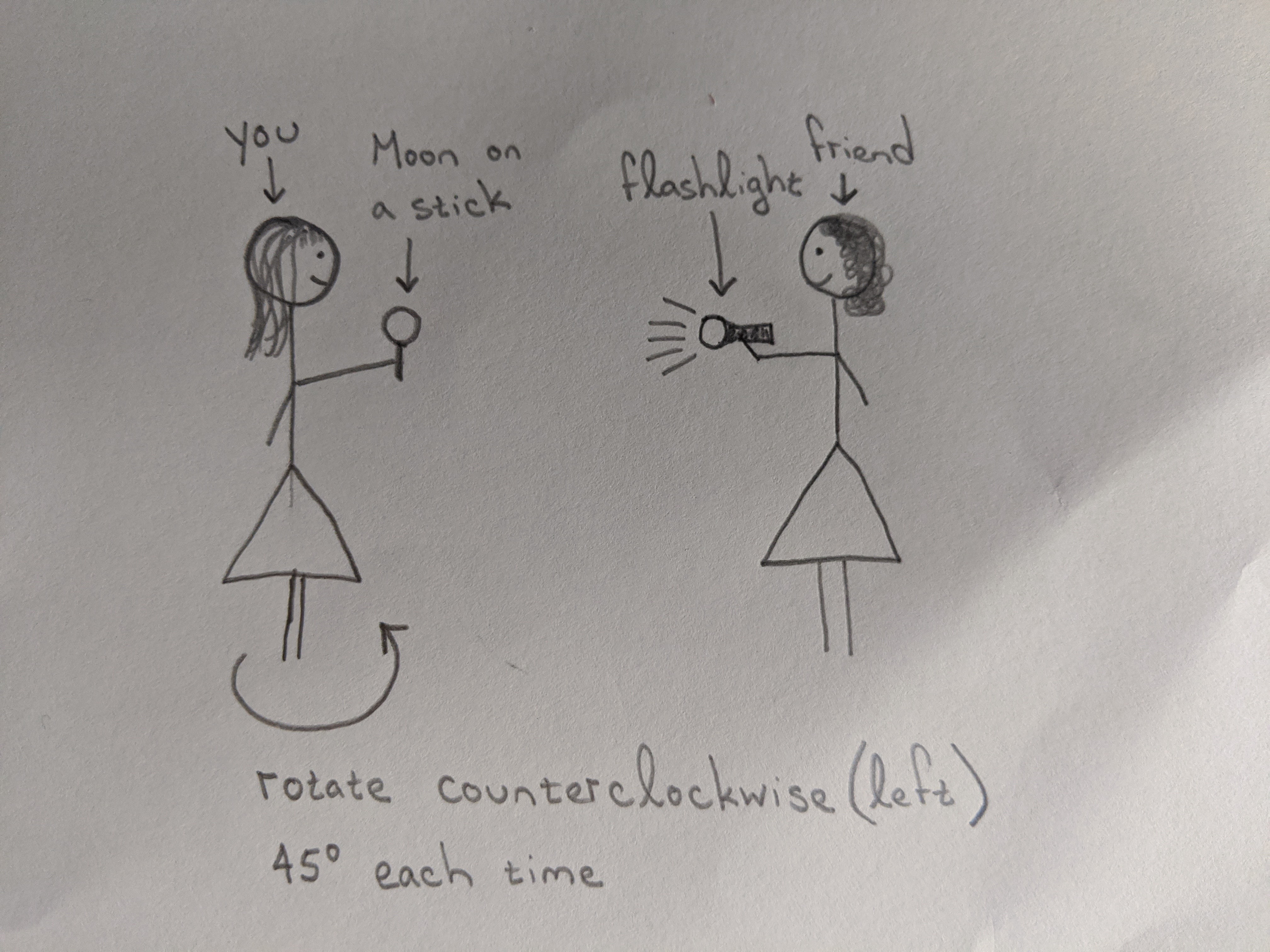Phases of the Moon Experiment
For this experiment, you will need:
- a flashlight, to represent the Sun
- a small ball on a stick, to represent the Moon
- a dark room
Steps:
- Have a friend hold the flashlight so that it is just below your eyes (not shining into them). If you don't have a friend available to help, you can place the flashlight on a shelf.
- Your head represents the Earth. Stand so that you are facing the flashlight. Hold the Moon on a stick with an outstretched arm at eye level. This represents a new Moon. How much of the lit-up part of the Moon can you see?
- Rotate counterclockwise (left) 45 degrees. Observe the lit area of the Moon again. This is a waxing crescent Moon. Waxing means it is getting bigger each night. The crescent is the shape that is lit up.
- Rotate 45 degrees counterclockwise again. This is a first quarter Moon.
- Rotate 45 degrees counterclockwise again. This is a waxing gibbous Moon. Gibbous means a shape between a half-circle and a full circle.
- Rotate 45 degrees counterclockwise again. This is a full Moon.
- Rotate 45 degrees counterclockwise again. This is a waning gibbous Moon. Waning means it is getting smaller each night.
- Rotate 45 degrees counterclockwise again. This is a last quarter Moon.
- Rotate 45 degrees counterclockwise again. This is a waning crescent Moon.
- Rotate 45 degrees one final time. You have now completed the circle and are back to a new Moon. Each cycle of the Moon takes 28 days.

In the next section, you will find resources to learn more about the Moon and its effects on tides.
Previous section:
Moon Observation
Next section:
Moon References